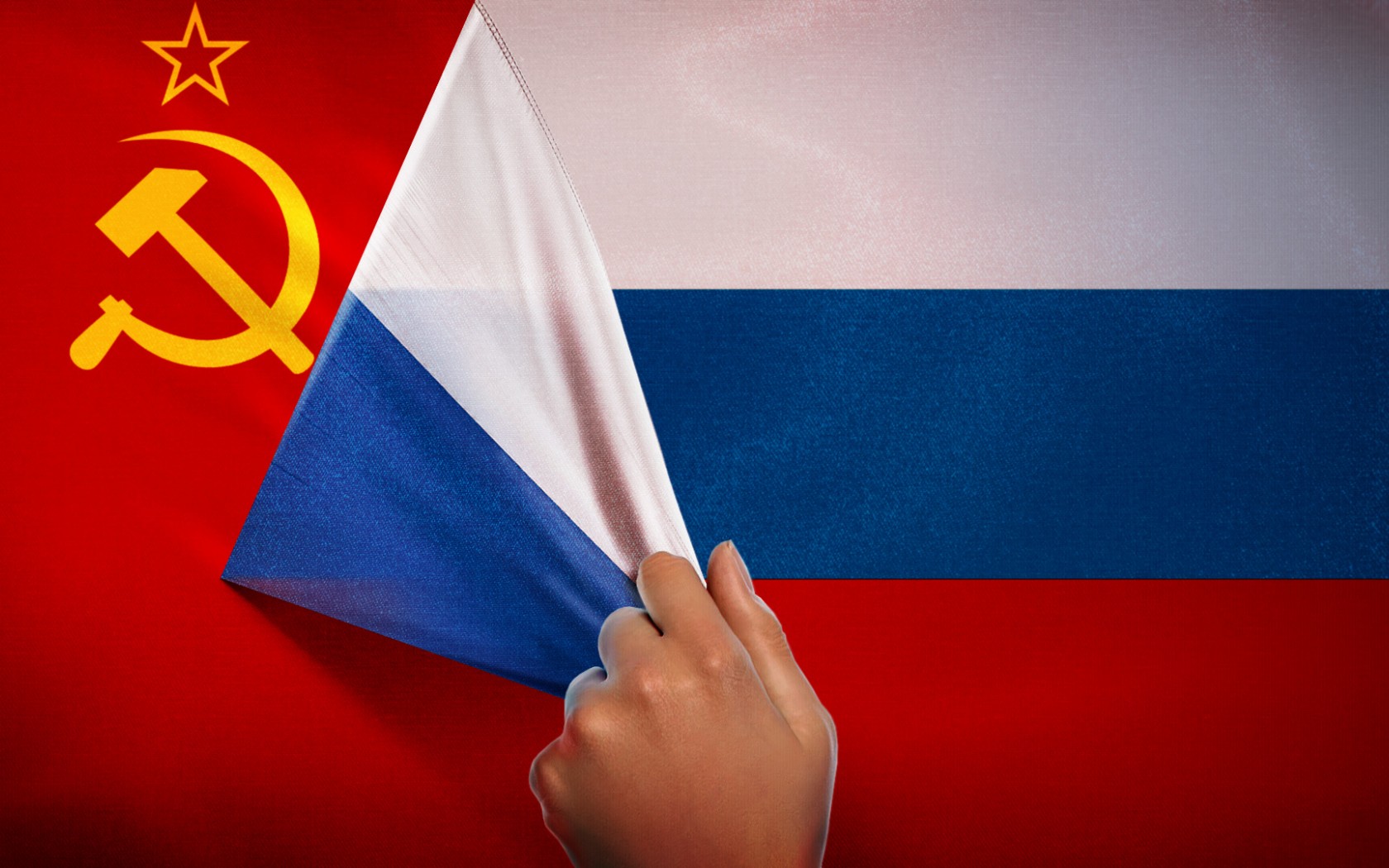Communism, Post-communism & Nationalism
The following are in depth research notes on Communism, Nationalism and Russia from the perspective of both Eastern and Western academic thinkers.
Politics, history, psychology are complicated. When the Soviet Union collapsed, the territorial maps were redrawn. Many Russian nationals become minority citizens of new countries that were formed. The following is an analysis of that story. It’s implications for nationalism studies today and in the future. And in some ways an answer to what Putin wants.
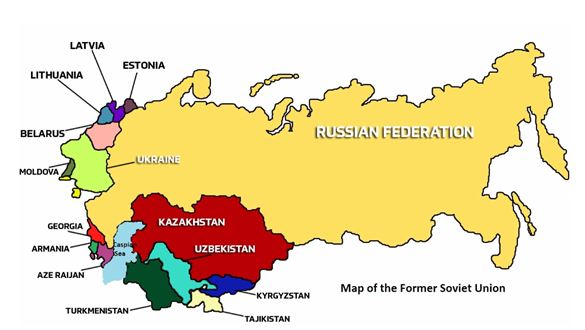
Facts & Figures
List of previous questions:
Was the resurgence of nationalism in eastern Europe in the 1980s a cause or consequence of communist failure?
What role does nationalism play in post-communist states?
SOURCES: Ronald Suny, Valery Tishkov, Jemery Smith, George Schopflin, Ernest Gellner, Stephen White, Alexander Motyl
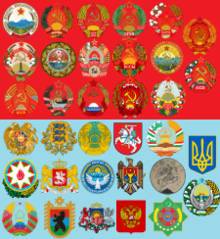
Case Examples: USSR (Poland, Latvia, Chechnya, Russia) or (secondary) Yugoslavia (Croatia, Serbian, Bosnia-Herzogovina, Kosovo, Slovenia, Montenegro)
- Ronald Grigor Suny, The Soviet experiment : Russia, the USSR, and the successor states (Oxford, Oxford University Press, 1998), Chapter 12.
- Jeremy Smith, The Fall of Soviet Communism (London, Palgrave, 2005), pp.16-20, 73-79.
- Brubaker, Rogers, 1994. “Nationahood and the National Question in the Soviet Union and Post-Soviet Eurasia: An Institutionalist Account”, Theory of Society, vol 23, no. 1, pp. 47-48.
- George Schöpflin, ‘Power, Ethnicity and Politics in Yugoslavia’, chap 23 in Nations, Identity, Power (London, Hurst, 2000).
- Tishkov, Valery Ethnicity, Nationalism and Conflict in and after the Soviet Union: the Mind Aflame London: SAGE, 1997. Ch. 2
- Alexander J. Motyl, Sovietology, rationality, nationality: coming to grips with nationalism in the USSR (New York, Columbia University Press, 1990).
- Ronald Grigor Suny The revenge of the past: nationalism, revolution, and the collapse of the Soviet Union (Stanford, Stanford University Press, 1993).
- George Schöpflin, ‘Nationhood, Communism and State Legitimation’ and ‘Power, Ethnicity and Politics in Jugoslavia’, chap 12 in Nations, Identity, Power (London, Hurst, 2000).
- Stephen White, Communism and its Collapse (2001).
- *Henry E. Hale, The Foundations of Ethnic Politics: separatism of states and nations in Eurasia and the world
- *Philip G. Roeder, Where Nation-States come from: institutional changes in the age of nationalism
- Defining, Background, Foundations (Detailed Background)
What are the debates regarding the collapse of the USSR in 1991?
The first point is to ask whether the post-1991 nation-states of the former USSR were already defined as national quasi-states (to use Roeder’s term) within the USSR. Generally the answer is: YES.
Less clear is why YES. It seems to me there are in principle three major explanations:
- The national explanation – a sense of national identity had been created which was important. One can then argue whether this was a Soviet invention or not.
- The statist explanation – the individual republics had institutions and interests which gained an advantage over other institutions and interests. (Roeder, 2008)
- The International Relationship (IR) explanation – the international community would only accept sovereignty for state-like entities.
Counter-factual of the USSR: why did it breakdown into nation-states? Why not into a multicultural/national power.
Thesis: primordial nationalism is only important when USSR prospects of collapse are high: the resources are utilized to reorganize political power when the USSR’s centre collapses.
International self-determination recognition used the primordialist approach so as to avoid precedent setting for any political movement.
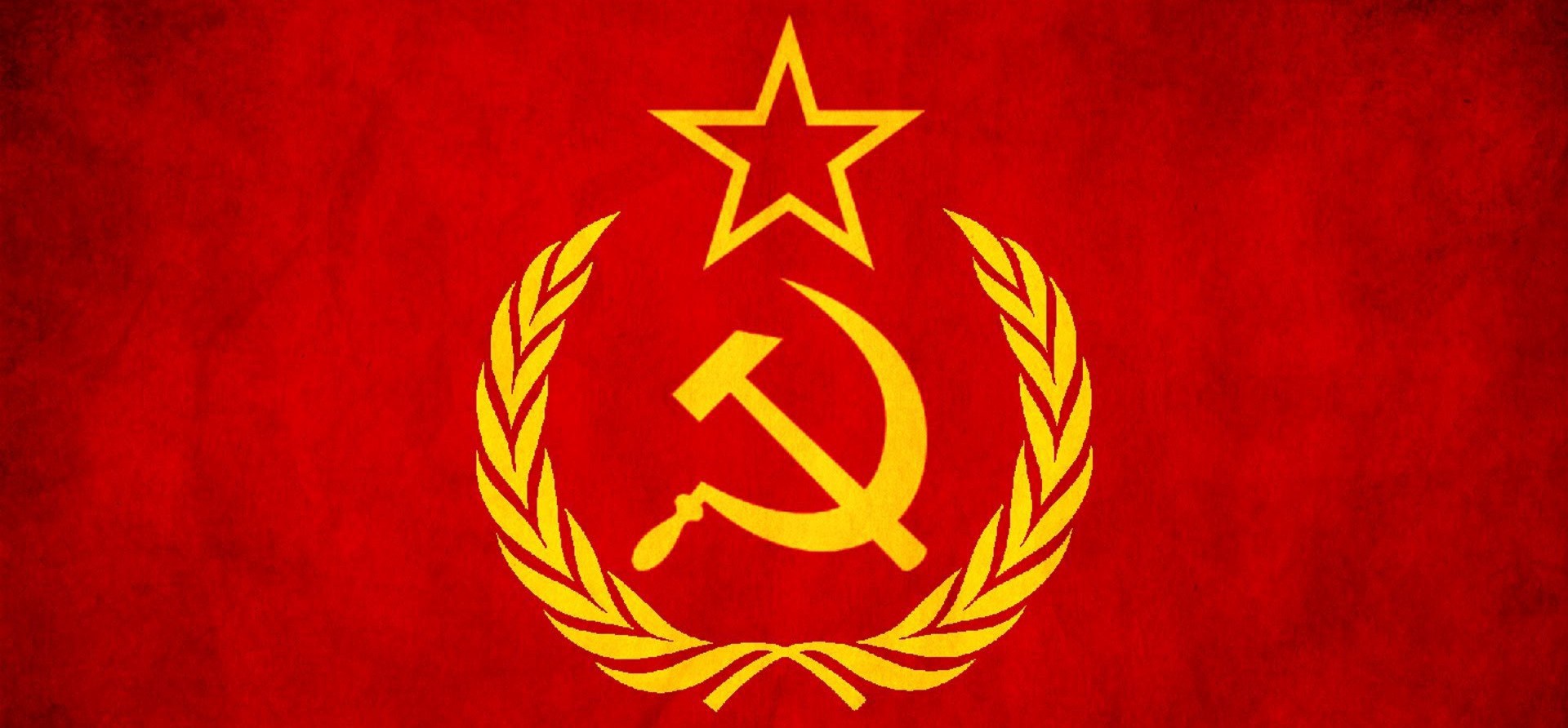
Nationalism Studies was Re-invigorated with the Breakup of the Soviet Union (1991)
- The Soviet Union was divided into territorially defined republics so had an ethnic colouration – ethnic nationalism defined the breakup of the Soviet Union.
USSR COLLAPSE: HISTORICAL NARRATIVE
The Soviet Union‘s collapse into independent nations began early in 1985.
After years of Soviet military buildup at the expense of domestic development, economic growth was at a standstill.
Failed attempts at reform, a stagnant economy, and war in Afghanistan led to a general feeling of discontent, especially in the Baltic republics and Eastern Europe.
Greater political and social freedoms, instituted by the last Soviet leader, Mikhail Gorbachev, created an atmosphere of open criticism of the Moscow regime.
Gorbachev ushered in the process that would lead to the dismantling of the Soviet administrative command economy through his programs of glasnost (political openness), uskoreniye (speed-up of economic development) and perestroika (political and economic restructuring) announced in 1986.
Gorbachev doesn’t want to intervene in the affairs of others.
Additionally, the costs of superpower status—the military, space program, and subsidies to client states—were out of proportion to the Soviet economy. The new wave of industrialization based upon information technology had left the Soviet Union desperate for Western technology and credits in order to counter its increasing backwardness.
Unintended Consequences: Gorbachev’s efforts to streamline the Communist system offered promise, but ultimately proved uncontrollable and resulted in a cascade of events that eventually concluded with the dissolution of the Soviet Union. Initially intended as tools to bolster the Soviet economy, the policies of perestroika and glasnost soon led to unintended consequences.
In all, the very positive view of Soviet life, which had long been presented to the public by the official media, was being rapidly dismantled, and the negative aspects of life in the Soviet Union were brought into the spotlight[5]. This undermined the faith of the public in the Soviet system and eroded the Communist Party’s social power base, threatening the identity and integrity of the Soviet Union itself.
The dramatic drop of the price of oil in 1985 and 1986, and consequent lack of foreign exchange reserves in following years to purchase grain profoundly influenced actions of the Soviet leadership.[1]
POLITICAL: Several Soviet Socialist Republics began resisting central control, and increasing democratization led to a weakening of the central government.
Gradually, each of the Warsaw Pact nations saw their communist governments fall to popular elections and, in the case of Romania, a violent uprising. By 1991 the communist governments of Bulgaria, Czechoslovakia, East Germany, Hungary, Poland and Romania, all of which had been imposed after World War II, were brought down as revolution swept Eastern Europe.
The USSR’s trade gap progressively emptied the coffers of the union, leading to eventual bankruptcy.
The Soviet Union finally collapsed in 1991 when Boris Yeltsin seized power in the aftermath of a failed coup that had attempted to topple reform-minded Gorbachev.
To break Gorbachev’s opposition, Yeltsin decided to disband the USSR in accordance with the Treaty of the Union of 1922 and thereby remove Gorbachev and the Soviet government from power. The step was also enthusiastically supported by the governments of Ukraine and Belarus, which were parties of the Treaty of 1922 along with Russia.
But by using structural reforms to widen opportunities for leaders and popular movements in the union republics to gain influence, Gorbachev also made it possible for nationalist, orthodox communist, and populist forces to oppose his attempts to liberalize and revitalize Soviet communism. Although some of the new movements aspired to replace the Soviet system altogether with a liberal democratic one, others demanded independence for the national republics. Still others insisted on the restoration of the old Soviet ways. Ultimately, Gorbachev could not forge a compromise among these forces and the consequence was the collapse of the Soviet Union.
If the causes are above why did nation-state solution emerge WHY NOT multi-nationalism?
Two competing approaches to the causality of USSR collapse:
Answer MUST be conscious of TIMING: (PRE) = pre-collapse (POST) = post-collapse
(A) On the one hand, there are those, like (Motyl, 1990), who argue communism was inevitably doomed as a container, freezer or prison house of nations, a repression of nationalism and that nationalism brought communism to the brink in 1980s. This paper argues that nationalism was a preexisting and competing ideology throughout Soviet Union history.
(B) Nationalism was a weak, insignificant phenomenon, like (Tishkov, 1997), adding it was the benefactor of a chess-game miscalculation by political agents, pragmatic decision-making. Nationalism needs to be stoked up by the leadership. Looks at socially engineered states such as Ukraine, the Baltics + Caucasus. Capitalism + agency defeated Communism. (cause) Nationalism is the benefactor. (consequence)
(C) Self-determination was used to bring the USSR together, it was also used to tear the USSR apart. International factors must be explored.
Answer MUST be conscious of TIMING: (PRE) = pre-collapse (POST) = post-collapse
Whether there was a nation narrative before or during the USSR, it only matters after! SO what? (A) doesn’t matter until the collapse is eminent.
- Communism as inevitably doomed, repressive/non-acccomodative & Nationalism caused the collapse: the law of declining Empires applies, a natural reaction against Russification.
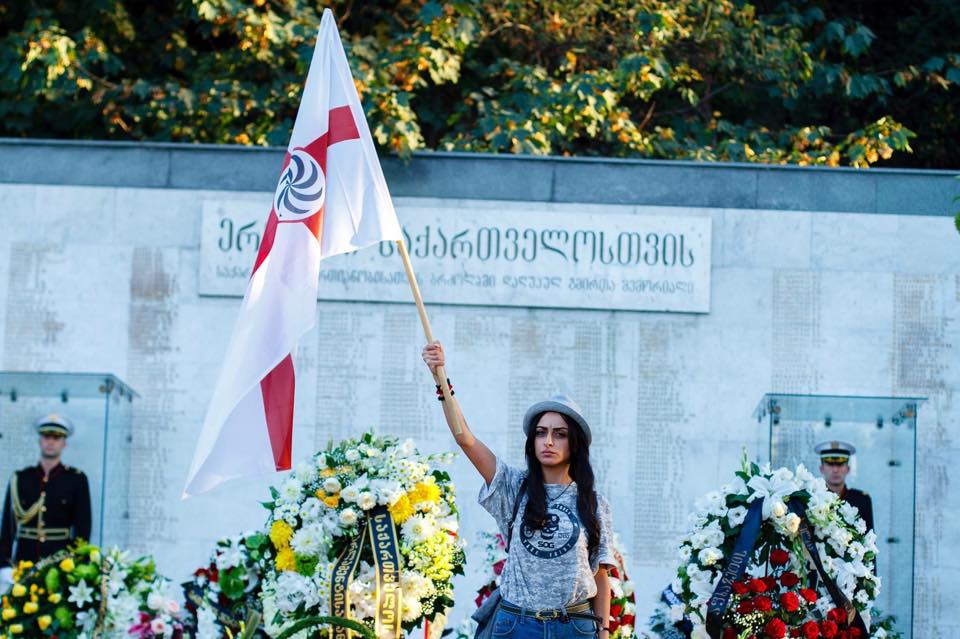
Nationalism was the key benefactor of collapse: but was it the cause?
Causality On Collapse Nationalism
Tishkov, 1997 top-down (elite-error) not-inevitable engineered
Suny, 93,98 nationalism instrumental not-inevitable engineered/primordial
Motyl, 1990 repressive commies inevitable primordial
Martin, 2001 affirmative action empire not-inevitable primordial
Gellner, 1983 wrong address repressive unknown modernity/engineered?
STANDARD (A) NARRATIVE
- Western Academic Perspective: “Standard view of break-up of Communism and nationalism: National aspirations suppressed. Nations denied their autonomy by the might of the centralizing force of Moscow and the Party. The Communists tried to create homo sovieticus.
- Marxist-Leninism’s Ideological Competition: They were scared that nationalism would compete with Marxist-Leninism as an ideology. Lenin etc had witnessed lots of unrest in the Empire in the 1880s as the Tsar attempts to Russifying.
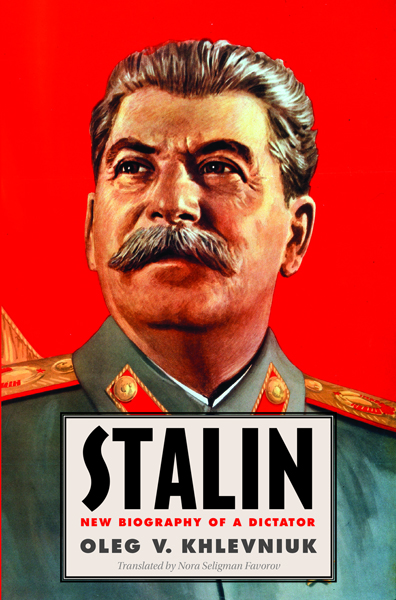
SOVIET POLICY as INCOHERENT
- Soviet Man: Soviet went back-and-forth on the idea of creating a monolithic new nation. Stalin, in particular, attempted to create “Soviet Man” through co-ordinated education, language, history; learning Russian was a means of social advancement. HOMO SOVIETICUS: Russian education language, history, means of advancement, territorial integrity, cultural distinctions: republics given more autonomy.
- Stalin crushes nationalism > changes the alphabets.
- BUT republics always keep their territorial integrity, have their cultural institutions, and non-Russians promoted to power. Tokenistic – people dancing in cheesy national costumes – but significant.
- Never a Soviet passport (unlike Yugoslavia) Soviet Union never overtly calling for Russian nationalism….“The center never attempted to homogenize the multinational country and create a single nation-state. There was a Soviet people but no Soviet nation. No-one was permitted to choose ‘Soviet’ as their passport nationality.” (Suny, 1993)
- Nationalism Under Cloak: Stalin was Georgian but power was Russian: Even if it wasn’t perfectly repressive, the Soviet Union actually masks nationalism under the cloak of communism: it failed (perhaps inevitably) and so nationalism becomes the logical successor…..
- In the post-Communist world, there were both nationalist ethnic groups that preceded the Soviet Union such as the Baltic states – acquired in 1945 – while others were constructed, mutated and altered – the Central Asian states – during the 70 years of the communist post-nationalist experiment.
How did the USSR handle the nationalist question?
PRE-COLLAPSE) USSR HISTORICAL NARRATIVE
- Czarist Russia was only threatened against Polish but not much else was significant. Czarist Russia in 1880s attempted to Russify their empire. (Breuilly)
- Germans supported Polish and Ukrainians against Russian hegemony.
- Russian Revolution of 1905: was a reaction against Russification provoking a confused response. The frustration of the Russian Revolution of 1905 typifies the national fact which the socialists learned could not be rejected outright. In that particularly confused affair, it was both a socialist and a nationalist revolution that had failed. Only through pragmatic compromise – against mutual anti-imperialism – could a new political system emerge in 1917.
- From the inception of Bolshevik Revolution, pragmatic decision-making accommodated self-determination as a means to “recruit ethnic support for the revolution, [but] not to provide a model for governing of a multiethnic state.”[1]
- Lenin Prevailed and 1922 the USSR based on Ethno-Territorial: Russia Belurasi, Urkain Azerbajan and Georgia 6 Republics. It stuck to the nation principle than anyother state.
- Stalin had 15 non-Russia republics in the 1930s. There were 17 national regions the Republic had a constitutional right for succession under the 1936 constitution. There was elaborate ethnography which was linked to educational entitlement. There was titular nationalities employment in Ukrainian an Affirmative Action system. Ukrainians rose in the Russian government. Nikita Kruschev was Ukrainian for example. (Breuilly)
- Affirmative Action Empire: The Soviet Union “was the world’s first Affirmative Action Empire.” (1, (Martin, 2001)) It was the multiethnic state’s character that forced a confrontation “with the rising tide of nationalism and respond by systematically promoting the national consciouseness of its ethnic minorities and establishing for them many of the characteristic institutional forms of the nation-state.”
- Nationalist in Form, Socialist in Content: Stalin in the mid-1920s accepted the special Central Committee conference on nationalities policy, (Martin, 2001), Stalin believed in ‘Nationalist in form, socialist in content’ ((Martin, 2001) Stalin treated them as real nations.
- Ideological Goal of Communism: was to redirect the postal error of nationalism through homogenization and steady process of integration. This is most apparent under Stalin who “extended the state’s power over all aspects of public and social life, the Soviet leadership no longer was willing to tolerate the autonomy of art and culture that it had allowed in the 1920s. (Smith, 2005) Artists were to be mobilized as ‘engineers of the soul,’ in Stalin’s words, to become on more tool in the construction of socialism.”[2] What emerged was a de facto empire under the guise of communism. (Suny, 1993)
- Nations to be Frozen: Assimilation what not viable in the short-term but the Bolshevki’s believed “national consciousness was an unavoidable historic phase that all peoples must pass through on the war to internationalism.” (5, (Martin, 2001)) nationalism is NOT ephemeral as this paper has demonstrated. But it is wrong to assume it is forever. If primordialism can show that it existed before modernization then it is a long-term reality, if modernization theory is correct, it may be a shorterm step on the way to internationalism[3].
- BUT the KEY INSTITUTIONS were the centralized planning, army and secret police.
After the Stalisnist period: Corruption and nomenkaltura officially specifying who is allowed to have control in the system. Secession was made punishable by death. THIS IS ARGUABLY about totalitarianism. Appeal to Russian language and history in the 1941. There was a fixity. Signs of decline was very clear by the 1980s. There was shift to bilingualism in USSR. There was no Russia communist party: only none Russians had a communist party only the non-Russian republics had their own communist system. There was corrupt kinship in the republic areas THEREFORE THIS lays the groundwork for nation-states. (Breuilly)
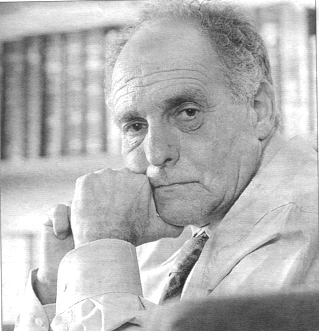
Gellner’s Wrong Address Thesis:
- (Gellner, 1983) In typical Gellnerian fashion, he amusingly suggests the Wrong Address Theory that in the competition for the hearts and minds of the polity, the Marxist message “intended for classes…by some terrible postal error was delivered to nations”[4]. In other words, cultural conceptions have more appeal than the proletarian conception of identity.[5]
- This (A) argument argues that there was significant cultural factors such as language, symbols and traditions inherent in the ethno-nations before the USSR. The question is are they important? NOT UNTIL the Collapse is imminent says argument (B).
This Sleeping Beauty, Prison House or Freezer description of the Soviet Union has many supporters, particularly in the capitalist academia (inevitability of collapse)
- For the primordialists: Nation academics: the freezer metaphor makes sense.
Bolshevik’s SAVED the APPARATUS of RUSSIAN EMPIRE, Just as Yeltsin SAVED the Russians from DISINTEGRATION, totalitarian Putin Regime:
ONCE THE COMMUNIST WHEELS FALL OFF: NATIONALISM inevitably occurs.
“Nationalism, then, may be, and clearly often is, a potent weapon of regionally or ethnically based politicians who aspire to material largesse or political power. But nationalist behaviour is not just means to, and the nationalist ideal is not just a rationalization of, non-nationalist goals: the ideal can be an end in itself and can be the most rational means for pursuing that end. That is to say, nationalist behaviour may also be the rational response of bona fide nationalists – individuals with a sincere and strong belief in the nationalists ideal – to opportunities to pursue their goals.” (Motyl, 1990).
(Brubaker, 1994)
- Brubaker said: “Those policies…were intended to do two things:
(1st): to harness, contain, channel, and control the potentially disruptive political expression of nationality by creating national-territorial administrative structures and by cultivating, co-opting and (when they threatened to geto out of line) repressing national elites;
(2nd): to drain nationality of its content even while legitimating it as a form, and thereby to promote the long-term withering away of nationality as a vital component of social life.” (Brubaker, 1994, pg 49)
Tishkov says Brubaker wrong:
1) overestimated the existing political architecture, (including strategy for promoting the slow death of nationalities. {1940s (withering away of nationalitity) versus the 1980s (they realized they couldn’t do away with these things).
Brubaker also makes the common mistake of 2) overlooking the roles of momentum, improvised reactive actors, a search for immediate responses for challenges (political opportunism) and power dispositions in the Soviet State. TISHKOV sees manipulation from the centre as a game of chess. And “constant struggles for power in the Kremlin” (36,Tishkov, 1997).
1) Nationalism as a cause of Communist failure: (Breuilly says no way)
- Nationalism trumps Communism: explains conflict between China and Russia.
- ‘Primordial’ explanation – the Soviet Union ‘froze’ the nationalisms, especially under Stalin, and they re-emerged after the collapse
- Strong significance on national identities before the existence of the Soviet Union (ie. before the Bolshevik Revolution)
- Ronald Suny: ideas of nationality are deeply embedded in nations’ understandings of their pasts
- Jeremy Smith: the Soviet system used repression and ‘Russification’ to put a lid on nationalist movements… re-emerged once Gorbachev’s glasnost policies took effect (ie. emphasis on blaming Gorbachev)
- Ethnic and territorial loyalties that were present in the former Soviet republics
- Soviet Union as a ‘prison house of nationalities’ based on the repression of national identities that ‘burst out’ – a key factor in the collapse of the Soviet Union.
Critique:
- Nationalism was not a strong influence until after the Bolshevik Revolution and Lenin’s ‘national policy’ that defined the republics and autonomous regions within the new Soviet Union
- The ‘national’ question was not significant in late Tsarist Russia in the late 19th century and early 20th
- Majority of the republics were not ethnically homogenous – multi-ethnic composition for many years before the Soviet’s ‘national’ policies based along ethnic lines were introduced.
- For most of the Soviet period, the nationality policies were successful in integrating people (Jeremy Smith, 2005)
- (A) Primordial nations re-emerge. Those who think nations as natural. The Soviet Union was a create FREEZER they had recognition but no political power BUT as the freezer breaks down, the nations re-emerge, there is mutation.
(Tishkov, 1997) TISHKOV’s CHARACTURE of (A) Arguments
- USSR as an “empire-type polity whose history was marked by territorial expansion, colonial methods of rule and the cultural assimilation of ethnic groups by more dominant language and cultures”
- Crimes of mass deportation: and repressions, annexation and liguidation of sovereign state entities, destruction of environment, undermined ethnic groups.
- USSR language policy: the Russian-language policy through its international Communist ideology, suppressing attempts to establish political cultural autonomy for ethnic minorities unless these attempts were sanctioned by central or perepheral elite.
- Communist ‘bureaucracy strictly regulated the daily lives of the citizenry, violating their rights and freedoms and ignoring the interests connected with ethnic culture and values.
Top-down social engineering/undervaluing nationalism’s contribution (Tishkov’s, 1997) critique against (A) basically: Western theorists are over deterministic, Soviet Union was NOT, according to Tishkov, the last empire of the late 20th century,
(A) Scholars emphasize the inevitability of national emergence because of the USSR’s repressiveness. BUT (Tishkov, 1997) does not think it was inevitable. Western tautology: the law of collapsing Empires.
- Nationalism as socially engineered, weak & benefactor: Collapse was not inevitable (Tishkov et al): Agential, Accommodative, manipulation: Riding the Tiger, Marxists ideology, pragmatic decision-making, post-communist signposts turn to nationalism:
Answer MUST be conscious of TIMING: (PRE) = pre-collapse (POST) = post-collapse
- But the “ancient hatreds” – primordial, deep-freeze – thesis hardly explains what happened in 1989-91.”
- (B) Instrumental nations are invented: quick-thinking politicians in non-Russia areas and concluded that if they were to acquire power they found nationalism as the basis.
- (D) Reforms weaken the centre> crystallisations of power elsewhere. There have been very few cases that go for seccession from the centre and end up with war and the centre winning. A lot of the outcomes are unintended. Gorbachev’s political reforms had the effect of unintended consequences.
- (E) Democratization weakens elite power> need for popular mobilization and external support. The claim for national independence and nation-self-determination particularly if it is framed in democratic terms. Breuilly saw what happened at the CENTRE of the USSR. What happened at the centre, reduced the capacity of the elite to prevent revolt: public unrest.
- 1970s the centre couldn’t distribute as much. Economic system was inefficient. Regional barons 9party bosses gave them more and more power. Dissolution of USSR there was a running off with the family silk: once regional leaders say that authority was undermined: they switched to nationalist to preserve leadership. (it occurs again and again) there are still Nursultan Abishuly Nazarbayev in Kazakstan. NATIONALISM is INCIDENTAL. Break up of USSR allows regional bosses to take over with nationalism as the new ideology.
- CRUCIAL THING IS THE CENTRE VERUS PERIPHERY; Why were the leaders happy to enjoy. Why did they stop going along with the essential Moscow line? Steal the family silver. (Slezkine, 1994)
- Nations exist because we say they exist. So this is about politics.
- 1st School of Thought: (A) Totalitarian at the Top Managing everything. (A) Then the politicians and public groups are constraints against (B): BUT (b) is what really matters
- 2nd School of Thought: (B) is reacting against society, Russian public was very active in the Soviet Union: there is no sociological data to back these claims…. USSR looks like a monolith but it wasn’t.
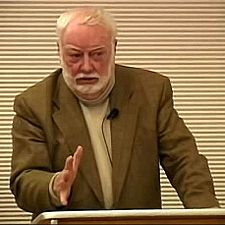
(Connor, 1984)
What is the relationship between nationalism and communism?
(Walker Conner, 1984): ethnonationalism.
National Question in Marxist-Leninist Theory and Strategy: 1984: Princeton University
Conner reaches four broad conclusions:
- That communist endorsement of the right of national self-determination, including the right of secession, was instrumental in the success of the Soviet, Yugoslave, Chinese and Vietnamese revolutions;
- That the prescriptions laid down by Marx and Lenin for post-revolutionary nation-building and national integration are too disjointed and contradictory to form a coherent strategy; Walker points out the abrupt and sharp changes in policies such as language, education, culture, personnel recruitment and regional investment: COUNTER-argument: his examples are deviations from Marxist-Leninest orthodoxy rather than symptoms of doctrinal contradictions. Some incoherence’s could also be viewed as pragmatism.
- That communist regime have regularly deviated from the few clear guidelines that Marx and Lenin did lay down; reincorporating secessionists, geerymandering of national boundaries, deportation of nationalities from their ethnic homelands, curtailin national language education and national self-expression THIS is natural for antipathy with ‘survivals of the past, a commitment to rapid economic modernization and a vested interest in attracting majority support.
- That nationalism is a continuing and growing problem throughout the communist world: this is less convincingly demonstrated in a variety of cases.
CONCLUSION: Marxism-Leninism is flawed for a failure to recognize that nationalism is a ‘permanently operating factor’ in modern history.
Jeremy R. Arael: “From this perspective not only Marxism-Leninism but the many the rtheories that post a negative correlation between ethn-centricism and socioeconomic modernization are also ‘fallacious’. In fact, however, the pertinet data are considerably more ambiguous than Conner implies. While he introduces a useful corrective to an already widely questioned bit of conventional wisdom, he almost certainly overstates his case. Switzerland, after all, is not entirely a produce of wishful thinking, and even Yugoslavia may turn out to be more than a passing illusion – even if its surivival owes little, if anything, to Marxist-Leninist theory.” JeremeyR. Arael.
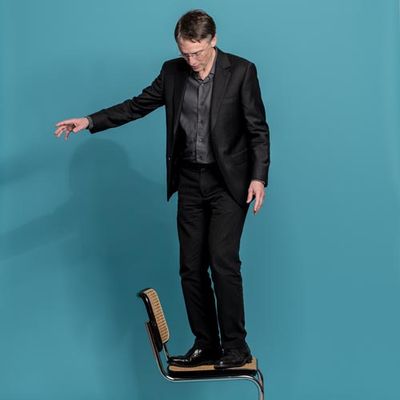
(Slezkine, 1994)
The USSR as a Communal Apartment, or How a Socialist State Promotes Ethnic Particularism: Title: USSR & Ethnic Particularism
- Bolshevik’s news that the national was powerful.
- The Great Transformation of 1928-1932 turned into the most extravagant celebration of ethnic diversity that any state had financed. It accepted ethno-territorialities nationalities. THERE was the Great Retreat in the mid-1930s where Stalin changed the alphabet (for example).
- “…explanation that class was secondary to ethnicity and that support of nationalism in general (and not just Russian natonalism or ‘national liberation’ abroad was a sacred principle of Marxism-Leninism.
- Stalin said that the “Finnish nation exists objectively, to not recognize it is ridiculous: they will force us to if we don’t.”
- Soviet nationality policy: allows for the coexisted of 1) republican statehood and 2) passport nationality. 1) the former assumed that territorial states made nations, 2) primordial nations might be entitled to their own states.
- (Slezkine, 1994) “USSR was an apartment where different rooms housed nationalitities: but the tenants of those rooms barricaded their doors and started using the windows, while the befuddled residents of the enormous hall and kitchen stood in the centre wondering: should we recover our property? Knock down the walls? Cut off the gas?” Russians decided to let GO.
Nationalism was one of the important elements in the State-structures. But these collapses could only come about once the Communists withdrew from Satellite states. (Breuilly)
- Instrumentalist nation academics: saw the Soveit System was collapsing, Russia lacked the will to preserve USSR. There was a need for a new basis of ideological power.
(Tishkov, 1997) -> political manuveuring, top-down nation-building, collapse not-inevitable, (some) nationalisms were engineered to manage SU politics:
- Political Agency: Taking a hard agency approach, Tishkov argues that it was political agency at various junctions that explains the sporadic nationalist policy changes and that the collapse of the Soviet Union could have been avoided with proper distribution of graft to the political elite[6] of those 15 union republics accommodated into the USSR by 1956.
- 1917: Marxist ideology’s success was only possible through pragmatic manipulation of some preexisting ethno-nationalist movements in the Russian Empire.
- Nationalism was WEAK or unimportant until the 1980s: His emphasis on agency, private motivations of actors detracts from the contribution nationalism made prior to, during the early, middle and the post-Communist stages of this complicated historical narrative.
- NATIONALISM was used against bourgeois movements.
LONGTERM goal of Soviet Union was to ‘demystify and discard nationalism.
- Incoherent Contradictory M/L Policies: the subsequent contradictory nationalist policy of socialist federalism, retrenchment of dominant ethie (Russian) and social engineering under Stalin was a complicated bi-product of political agents responding to continued pragmatic concerns.
- Central Assian: large block of Islam > Salin fears this > constructed separate republics in the Caucasus.
- Marxist revolution was international but only in the Russian Empire did it occur: minority nationalities were given their republics to help in the revolution…
Social Engineering:
- a) Unitary control was not a viable option and socialist federalism would territorialize ethnicity creating further identities and ethnic distortions.[7] The problem with any form of federalism is that it both garners necessary support from elite leadership of the satellite republics but hinders unitary integration to the dominant ethnie. (Tishkov, 1997)
- 1st the Inventory of ethno-nations: Social Engineering “meant inventing nations where necessary.” (30, Tishkov) Tishkov believes in the census of 1897 there were 146 languages an dialects in the country.
- Lenin said that the state proclaimed the right of self-determination for ‘formerly oppressed nations’
- b) Federalism Produces Ethnic Particularism: therefore is not a supporter of federalist systems since they “promote ethnic particularism.”[8]
- Long-Term v Short-Term Goals: Long-term goals of communism called for unity “within a single state”[9] but short-term political expediency called for Lenin’s socialist federalism and state driven ethnography.[10] (Tishkov, 1997)
- Improvised Nationalism Policy: argues that “the ethnic policy of the Soviet Union was designed on an improvised basis partly to meet the serious challenges issuing from the regions and ethnic peripheries of the Russian empire, and partly to meet doctrinal aspirations.”[11] (Tishkov, 1997)
Territorialized Nationalism: When USSR broke up there was long existing territorial boundaries: these territorial republics were ethnically mixed: ethnography in USSR legitimized these groups.
- The post-Communist consequence, for Tishkov, was that territorially entrenched republics under the USSR were then transformed into nation-states by their political elite. This leads Tishkov to conclude that the USSR created those nations rejecting the prison house or freezer description of the Soviet Union by western academics who see the collapse of communism as inevitable, particularly (Motyl, 1990).[12]
(Alter, 1985)
- Russian Nation as New: Russian nation in an ethnic sense was introduced to public discourse rather recently as a logical ingredient of what official propaganda and academic language had labeled ‘the building of Soviet nations.
- Stalin never really denied that nations existed.
- Stalin Russian Appeal: mobilized the “glory of Russia’, its deep historical roots’, its mystical soul’ as part of popular mobilization during World War II.
- Later it began to reflect social changes within the Soviet Union, especially in the demographic patterns and growing social mobility of non-Russian nationalist.
- New Russian nationalists: clothed their hegemonic motives with emotional rhetoric about the impending extinction of the Russian people and the degradation of their traditions and culture (Tishkov, 1997)
- Two hand approach:
- “pursued a harsh policy of repression and hyper-centralized power;
- they carried out a policy of ethno-national state-building, accompanied by support for prestigious institutions and elites as a means to preserve the integrity of the state and exercise totalitarian rule.” (39, Tishkov).
Tishkov doesn’t believe in the triumph of nations. “It is rather a small layer of political and intellectual elites who set themselves up as the representatives of the nation and formulate national demands, with little or no pressure from or consulation with the mass of the people, in order to fulfil their own agendas.
a Tishkov is about political agency, individual actors affecting the consequences of nationalist movements, they didn’t have to TURN TO NATIONALISM: it wasn’t inevitable: it was easiest…
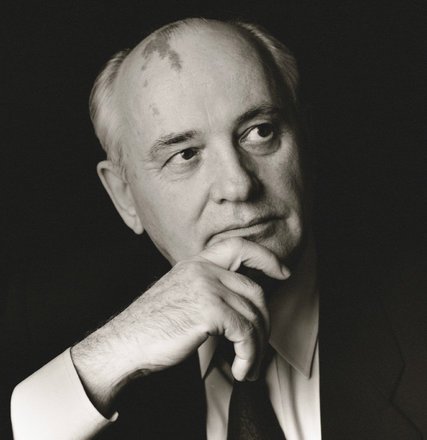
(COLLAPSE) USSR HISTORICAL NARRATIVE
- As Gorbachev attempted to reform the centre, opening up first the economy and then the political sphere, disparate groups – including those claiming to represent national interests – started to assert themselves.
- -> Soviet Union -> Collapse nationalist states. The Baltic’s had a recent historical memory, therefore were first to secede from the USSR. Historically, each part of the USSR’s collapse has a unique particularistic narrative: we CANNOT claim that it was all a socially engineered and that nationalism were weak IF existed. Tishkov’s belief that nations were meaningless instruments of state actors is grossly misleading.
- The Baltic nations had a historical memory before 1945, therefore were first to secede from the USSR. (<-Tishkov says they were socially engineered)
- (POST) The Poles would have trouble believing their historical nationalism was a socially engineered project from Moscow. As we’ve seen, the USSR had to managed nationalisms from the beginning and would not have gained control of the Russian Empire without the consent and support of this competing ideology.
(Breuilly, Lecture) The Nationalist Resurgence and the Collapse of Communism
- The Gorbachev era and reforms > instability> non-Russian republics as power arena. Gorbachev came to power much earlier than the USSR usually allows. Gorbachev wanted USSR to remain competitive against the West. He wanted to great levels of competition: economic reforms failed. Political participations in local and federal election. There was a turn against established elites. There was a shifting conflict into the republics.
- Non-intervention policy > impact on the Warsaw Pact state> collapse late 1989-ealy 1990> variations > state/nationhood combination. Gorbachev sees the unraveling. Yugoslavia multi-party, The Berlin Wall falls in November, Czech, Romania December Ceausescu executed.
- There was major dissident: their platforms were anti-communist BUT they saw the genuine national. The state structures were important. It was a statist system. The Soviet Union withdrew their incompetent regimes. Breuilly will not focus on non-USSR regimes.
(Breuilly, Lecture) The politics of collapse supports Tishkov
(1) Unintended Outcomes: the accidental collapse argument: USSR The non-Russia republics> the range of aims. Independence often an unintended outcome> key was Russia action.
- Russia was less willing to concede independence. Republican structures meant that all of these keen Baltic states and EuraAsia were given independence. We should not confuse outcomes with preferences. (Breuilly, Lecture) We cannot say that having independence was not the necessarily desired outcomes. The more rapid independence. Just as the key to the Warsaw states: the key to the none-Russia republics.
- There was the failure of the August 1991 coup in Boris Yeltsin. Russia had decided they didn’t want the burden. The Russian action triggered the outcomes elsewhere. Although nationalism was important, it wasn’t the cause. There was major dissident: their platforms were anti-communist BUT they saw the genuine national. The state structures were important. It was a statist system. The Soviet Union withdrew their incompetent regimes. (Breuilly, Lecture) will not focus on non-USSR regimes.
- Liberalization can lead to self-destruction very easily…..
CRITIQUE of THIS (B) PERSPECTIVE:
- Simplistic top down approach: excludes the cultural approach that would argue that nationalism was a more significant force beyond its political instrumentalism and that social engineering did not create the post-Communist states in every case or by itself. Underlying Tishkov’s emphasis on the Soviet political agents is his neglect of the nation and ethnic group existence beyond the “construct[ed] realities that could correspond to political myths and intellectual exercises.”[13]
- Secondly, there is a more nuanced reality to the post-Communist nation-state formation. It would be misleading to argue that these preexisting ethno-nationalist movements were not influenced by the Soviet Union – nationalist formations particularly in the Central Asian cases were greatly influences by the USSR – but they were not created solely by top down engineering. Tishkov undervalues the fact that the USSR was a diverse multi-ethnic and multi-national political society at its inception. Multilingual groups existed regardless of subsequent Soviet social engineering that had been legally entrenched in the political structure.
- CULTURAL FACTOR: top down approach to nationalism underplays significant cultural factors such as language, symbols and traditions inherent in the ethno-nations before the USSR. Tishkov is not completely wrong since each part of the USSR’s collapse has a unique particularistic narrative; one cannot claim that it was all a socially engineered, but it is partially true since the Soviet Union did shape the subsequent nation-states through political decisions of its leadership as Tishkov suggests. Smith’s critique: “Tishkov’s account of nationalism is deficient. In identifying elites as both the inventors and propagators of nationalism, he perhaps goes too far in dismissing the ‘nation’ as a meaningless category in academic discourse; however false its foundations, however much it is a tool of political elites, natiaonlism cab e a powerful mobilizing force and the issue of the connection between elite scheming and mass mobilisaions is inadequately dealt with.” (1545, Smith).
- Value-Laden Tishkov: NOTE THAT RUSSIAN ACADEMICS are more likely to claim that the Russians created the Baltics, Poland, Ukraine etc: because they were under the Russian Empire, then Soviet Union.
Causality debate: Nationalism was not the chief cause of the collapse but one of the primary beneficiaries of that collapse.
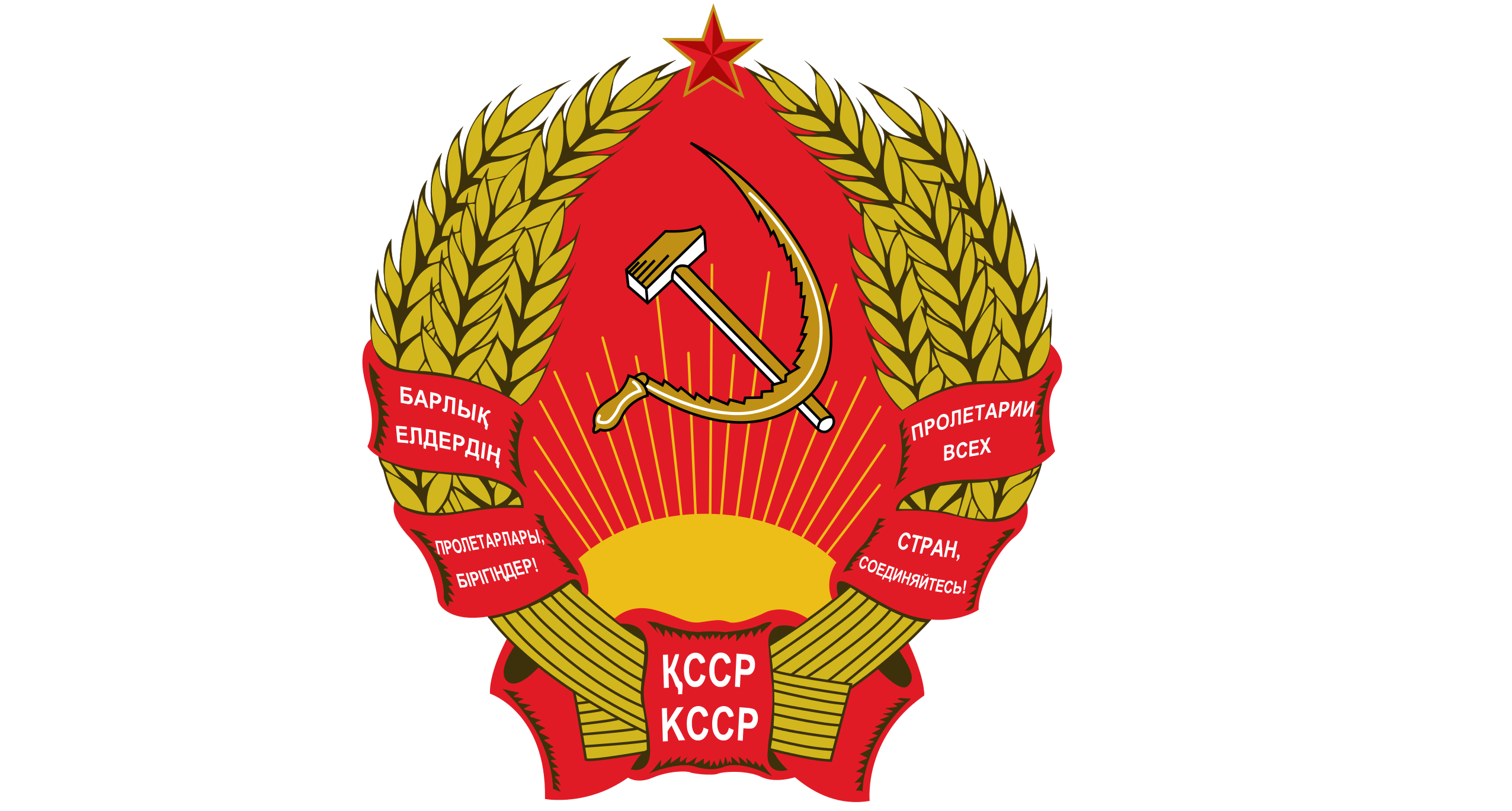
2) Nationalism as a consequence of Communist failure:
- ‘Instrumental’ explanation – nations and nationalisms were invented in response to the collapse of the Soviet Union
- John Breuilly: instrumental nations were invented through the collapse of the Soviet Union and the failure of the Communist regime – the republics responded to the collapse with the need to form new political institutions and adopt a new ideology to replace Communism (lecture).
- the non-Russian republics didn’t necessarily want independence – often an unintended outcome (Breuilly)
- The structural conditions facing the Soviet Union – deteriorating economic situation, geopolitical weakening at end of Cold War – were the principal causes of the collapse of the Soviet Union, not because of nationalism.
- Gorbachev’s political and economic reforms weakened the Soviet centre and allowed the republics more political and economic control over resources
- Ronald Suny: as economic decline accelerated, people reacted by adopting only other form of personal identity open to them – of the nation.
- Instrumental approach places emphasis on the impacts of Gorbachev’s reform policies in the late 1980s as a key explanation for the invention of the former Soviet nations – especially Jeremy Smith – blames nationalist resurgence on Gorbachev and that his reforms in the 1980s provoked violence and downfall of Soviet system
- Alexander Motyl: Role of republican elites who led anti-Soviet oppositional discourse – powerful in their own republics… also several were imprisoned during the 1960s under Brezhnev and later released in the 1980s. Gorbachev actually reinforced oppositional elites by legitimizing their opposition to the central state – through ‘perestroika’, ie. official liberalization policy.
Critique:
- why was the only ‘alternative’ identity nationalism? (critique of Suny)
- why did these movements take on a ‘national’ character and not another type of opposition?
- Motyl: importance of language and culture to non-Russian republics – role of symbols, memories and postwar independence (ie. brief periods of independence of most republics in the 1920s following the Russian Revolution)
- downplays ethnic ties and kinships – prominent in republics, especially elite groups were ethnically based.
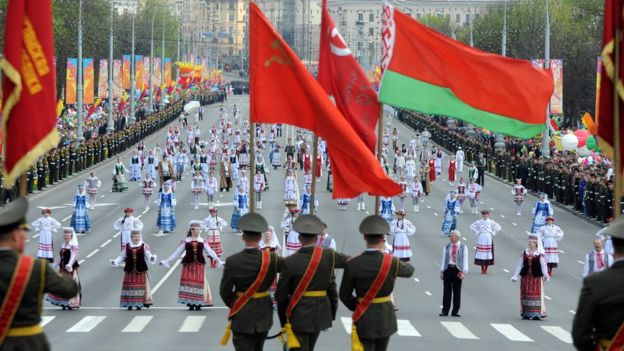
- 3 BIG CASES & Belarus
What role does nationalism play in post-Communist states?
THESIS: Important to point out differences because whatever we try to say generally about communism and nationalism is only going to be right in some cases. Diversity proves a point: communism had not succeeded in homogenizing.
Engineered Primordial
Ukraine Ukraine
Azerbijan
Armenian
Georgia
Baltics
*ROMANIA: Katherine Verdery (see: “Nationalism and National Sentiment in Post-socialist Romania”, Slavic Review, 52:2, Summer 1993).
- (Verdery, 1993) socialism couldn’t expunge national consciousness created in the 19thC
- leaders of Communist parties held power in environment where all other organizational entities had been dissolved – nation was a natural option once the centre had collapsed
- Shortage-alleviating strategies were common: when there’s a shortage of hair dye, only the Hungarians get serviced..
- Post-communists: blaming minorities for the country’s ills rather themselves, externalizing blame
- Sociological: “Most East Europeans are used to thinking in secure moral dichotomies between black and white, good and evil.” US vs THEM and “Social Schizophrenia” of communism has to be replaced by “other ‘others’”
- Soviet Union was the first state in history to be formed of political units based on nationalism. (Suny, 1998)
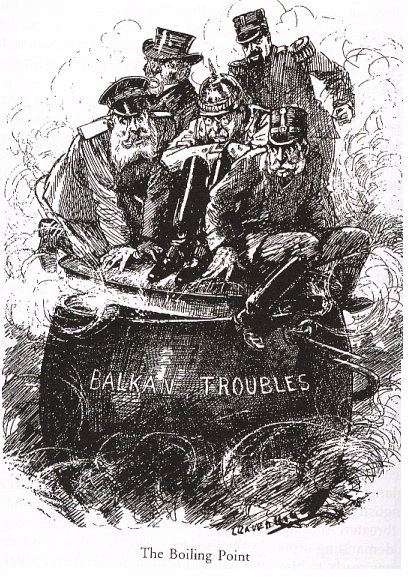
(POST-COLLAPSE) Nation-States EMERGE
- USSR post-collapse are frustrated that the Baltic states claimed independence because the Russian imperialists feel that they engineered those states…..
- Post-Communism: Role of Russia as successor of Soviet empire; new states in the Caucasus and the Balkans since the 1990s; on-going ethnic conflicts and independence movements in post-Communist states (eg. South Ossetia-Georgia, Kosovo) – legacy.
- Remaining Communist Political Elite.
*CAUCASUS:
South Caucasus comprises:
Georgia (including disputed, partially recognized Abkhazia and South Ossetia)
Armenia Restoration of independence
Azerbaijan (including disputed Nagorno-Karabakh Republic)
*BALTICS: (most keen) quick to seceessed but the Russians were depriveldged. There is questions about this ethno-nationalist. EU gives these groups the rights.
Latvia
Lithuania
Estonia
All had historical memories of independence. Not socially engineered.
*UKRAINE: Divided between social engineering and pre-existing nationalism: linguistic distinction. Civic national perspective rather than an ethnic.
*BELARUS (Central Asian Republics) stay close there. They don’t have the nationalist sentiments.
Close connection with Russia. Russia was less willing to give up.
DON’T confuse outcomes with preferences in the case of Belarus. This was a process of Unintended outcomes: can’t read back from the final outcome to the role of nationalism.
*RUSSIA: “The dog that didn’t bark” : imperial nationality is not interested. There were specific features: land based empire. There was a civic nationalism volunteristic. Ideas of restoring the USSR model, expanding power to the disapora, protector of Russian abroad. This was prevented by the August 1991 coup: Boris Yeltsin decides that Russia no longer wanted the burden. Crucial fact is the policy act in Moscow. Not the Renaissance in Putin: there is been only ONE CHECHNYIA. People though Russian nationalism would be violent. But that hasn’t happened there is amore important issues.
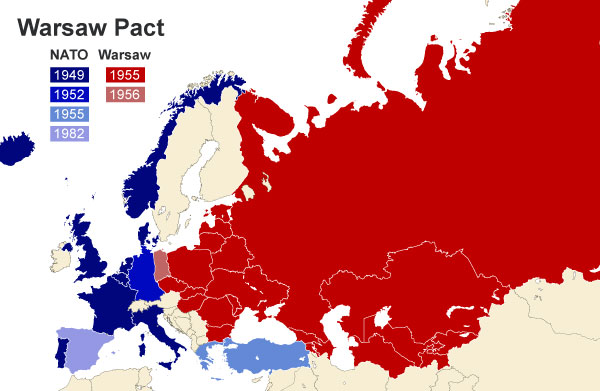
Warsaw Pact Cases: Czech/Slovaks (only nationalism), nationalism wasn’t key here: it was state power capitalism issues.
Yugoslavia serves to demonstrate the importance of political resources as a foil to USSR. Relationship between the agency of actors: Milosevic -> Serbian nation territory not willing to give up control.
A LITTLE primordial a LITTLE modernist:
*Henry E. Hale, The Foundations of Ethnic Politics: separatism of states and nations in Eurasia and the world
(Hale, 2008)
- “Uncertainty Reduction’: naturally to support something that everyone can agree on within a new polity: ie. national objectives. It gives people a map: it wasn’t an emotional primordial approach but it wasn’t of interests (modernists) but it was about having a signpost.
- Secessionist republics tore on global superpower apart and plunged Tito’s Yugoslavia into homocidal chaos BUT WHY?
- While Lithuania spearheaded secession from SU in 1990, neighboring Belarus remained loyal to the idea of integration.
- While Slovenia and Croatia seized the chance, Montenegro+Serb remained
- (Hale, 2000) wonders a) why some ethnic groups fight for secession, b) why some ethnic groups fight for multi-national states to find that secession = affluent ethinc group + autonomous already + least assimilated.
Despite implicating ethnicity in everything from civil war to economic failure, researchers seldom consult psychological research when addressing the most basic question: What is ethnicity? The result is a radical scholarly divide generating contradictory recommendations for solving ethnic conflict. Research into how the human brain actually works demands a revision of existing schools of thought. At its foundation, ethnic identity is a cognitive uncertainty-reduction device with special capacity to exacerbate, but not cause, collective action problems. This produces a new general theory of ethnic conflict that can improve both understanding and practice. A deep study of separatism in the USSR and CIS demonstrates the theory’s potential, mobilizing evidence from elite interviews, three local languages, and mass surveys. The outcome is a significant reinterpretation of nationalism’s role in the USSR’s breakup, which turns out to have been a far more contingent event than commonly recognized. International relations in the CIS are similarly cast in new light.
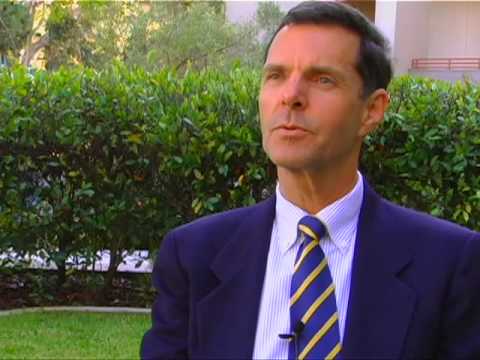
*Philip G. (Roeder, 2007) Where Nation-States come from: institutional changes in the age of nationalism
- “Institutional advantage” (Roeder, 2007) There was a map to negotiate a position. There was a constant playing on the national to achieve power. The federalist system PRODUCES quasi-national states. The republics each have one foot out the door already: they have the institutional advantage. It wasn’t just a matter of cognition. Roeder: stresses the institutional. There was a constant political negotiation with eachother.
COMBINE These two books see why that institutions of Republican entities would come to dominate post-Soviet politics. So Breuilly and Primordialists have a middle ground here.
To date, the world can lay claim to little more than 190 sovereign independent entities recognized as nation-states, while by some estimates there may be up to eight hundred more nation-state projects underway and seven to eight thousand potential projects. Why do a few such endeavors come to fruition while most fail? Standard explanations have pointed to national awakenings, nationalist mobilizations, economic efficiency, military prowess, or intervention by the great powers.Where Nation-States Come Fromprovides a compelling alternative account, one that incorporates an in-depth examination of the Russian Empire, the Soviet Union, and their successor states. Philip Roeder argues that almost all successful nation-state projects have been associated with a particular political institution prior to independence: the segment-state, a jurisdiction defined by both human and territorial boundaries. Independence represents an administrative upgrade of a segment-state. Before independence, segmental institutions shape politics on the periphery of an existing sovereign state. Leaders of segment-states are thus better positioned than other proponents of nation-state endeavors to forge locally hegemonic national identities. Before independence, segmental institutions also shape the politics between the periphery and center of existing states. Leaders of segment-states are hence also more able to challenge the status quo and to induce the leaders of the existing state to concede independence. Roeder clarifies the mechanisms that link such institutions to outcomes, and demonstrates that these relationships have prevailed around the world through most of the age of nationalism.
- International Causality
- (Hutchinson, Revision2) “What is the role of international factors: the buildup of post 1989 territorial split up into ethnic categories: what might be the factors that explain the survival of these entities. Was it the international communities desire to keep the patchwork. The reluctance of accepting the sovereign states. They are more likely to support territoriality in the Ukraine: it’s the role of international recognition.”
INTERNATIONAL RELATIONS:
Reform enabled crystallization of the centres in the regions. They never wanted a war of secession. If the centre resists it: the centre usually win those wars.
- WESTERNERS love self-determination framed on democratic claims so those elites are central.
- 1) Seeking ‘States” to recognize > Warsaw Pact, non-sovereign republics.
- 2) The problem with other claims. Once one claim is recognized there is a fear of creating a doctrine of succession rights. The way around this is to say that these states aren’t new at all. With Poland there is some difficulty in recognition. The same reasoning in the Republics in Yugoslavia. A federalist system was half-way into secessionist movements. There have been problems in Bosnia Herzegovina. In the case of Kosovo: was part of the republic of Serbia. Russia has the difficulty of Chechnya didn’t fit the same structure as other non-Russia republics for Federal System transition self-determination.
- 3) Specific features> e.g. The creation of German was ingenious, German-German simply create lander in East Germany and allow those landers to vote into West Germany, German decision to recognize of Croatia changed Yugoslavia, émigré influence, the EU and Baltic states. Germany recognized Croatia 1st which destroyed Yugoslavia. The EU has played a crucial role.
- You could argue federalist system was a natural movement to self-determination: Bosnia/Croatian and Serbian and Kosovo: clear cut case but was part of Serbia.
EMERGENCY KNOWLEDGE: Self-determination:
INTERNATIONAL RELATIONS: NATIONAL SELF-DETERMINATION AND STATE SOVEREIGNTY
INTERNATIONAL RELATIONS: A WORLD OF STATES
THE IR CONCEPT OF THE STATE
HISTORICAL JUSTIFICATIONS
FROM DYNASTIC TO POPULAR SOVEREIGNTY
THE CONCEPT OF NATIONAL SELF- DETERMINATION
THE AMBIVALENCE OF SELF-DETERMINATION
NATIONAL SELF-DETERMINATION VERSUS STATE SOVEREIGNTY
CONTEMPORARY ARGUMENTS AND ISSUES
INTERNATIONAL RELATIONS: A
WORLD OF STATES
THE REALIST APPROACH
State as unitary actor > narratives and “games” States act. Diplomatic: Britain this, France does this; it is very rational choice theory. There is a narrative history OR sometimes descriptive of game theoretical.
International “anarchy”: SUPRA-state authority does not exist. With these simple assumptions you can go on to other things.
State interests/preferences > State powers (how to measure) >
State reason (best use of power to realize interests)
The state wants to impose power. The state has interests and preferences. The state has powers. Some states are more powerful than others. The economy, stability, support by the subjects. Quality of leadership is more difficult to measure. ONCE a state has rationally gauged its powers, you have already defined the uses of SUCH TERMS. The term is Ends or the methods.
Order out of anarchy > diplomacy and war > international order
As plural, conflictual and consensual (in the sense that states recognize that they all have same reasoning capacities: this should produce stability)
QUALIFICATIONS OF “SOFT”APPROACH
Non-state actors: not states that have power: international corporations, religious groups, illicit organizations, there is a question of international organizations.
International norms: not simply self-interested actors: liberal democratic states behave rather differently. These leads to international society.
IR ASSUMPTIONS ABOUT THE STATE
The state as sovereign > indivisible power with nothing above or below > a modern world? Sovereignty: key assumption: it is an indivisible source of power, backed up on the means of violence. There is no comparable authority is above or below. THIS is a new framework BUT also doesn’t exist in parts of the world today.
The state as territorial > indivisible power with nothing beyond > modern?
The notion of a sharply defined state territory is arguably a product of modern history.
The distinction between state-society and state-state relations > reflected in distinctions between academic disciplines
Externally the state enters into discussions with other states.
Mirrored in nation/nation-state distinction
Nation (sovereignty) and Nation-state (state)
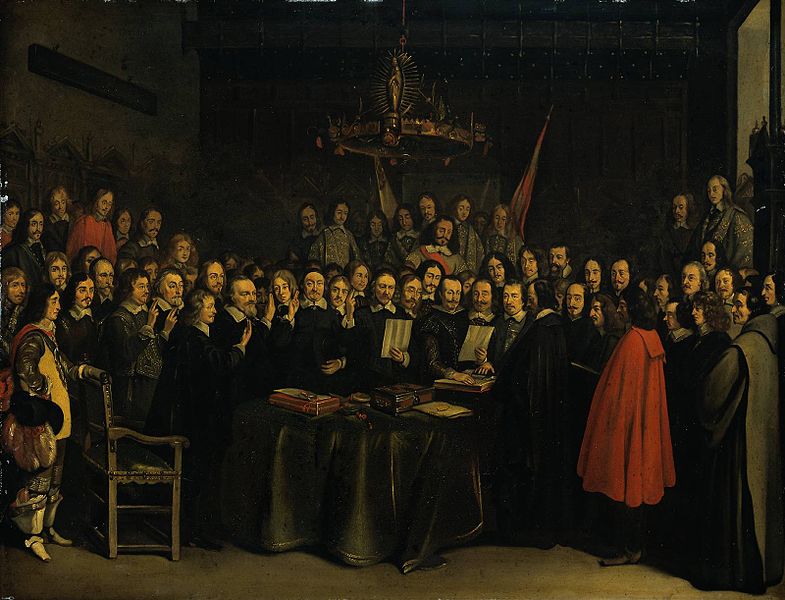
HISTORICAL JUSTIFICATIONS I
THE STORY OF WESTPHALIA: treaty of Westphalia 1648. A European wide settlement of the disputes in Question:
- Formal equality of states: recognized the actual power of larger states.
- Rejection of any authority above that of the state: Holy Roman Empire or Papacy.
- State consent as the basis of legal obligation: treaties and diplomacy
- Territorial integrity: supported the territorial integrity of the sates making the agreement.
THERE IS A NON-INTERVENTION VALUE IN MOST STATES>
Non-intervention in the domestic affairs of other recognized states (1555 Peace of Augsburg: ‘Cuius regio, eius religio’(`in your kingdom, your religion’)
The treaty of Westphalia recognized Lutheranism, Catholic,
The religion of the people did not switch to the religion of the new prince.
Complications: three recognized religions, guarantors, non-territorial “states”(Holy Roman Empire) involved
HISTORICAL JUSTIFICATIONS II
AFTER WESTPHALIA French hegemony was given up officially. They then developed the balance of power ideal.
European diplomacy > Utrecht > balance of power > dynastic policy as fitting the IR model > but arguably a source of disorder
Dynastic wars, calculation, deliberate removal of passion, Frederick the Great anti-Machiavellian but he is Machiavellian, Paul Schroeder: the consequence of all of this is great deal of instability egotistically; lack of an overarching norms was a product of that time.
New state formation: 18/19thcenturies American Revolution + British North America, Greece, Bulgaria, 1878 Treaty: it was certain nations accepting intervention or non-intervention.
New state formation: after 1918: there is a new source of international legitimacy: the state as a territorial bound unit in the 1884-85 Berlin Conference decides where the African territories are defined. National self-determination Woodrow Wilson was used to legitimate Hapsburg Empire. Unlike before, there was the establishment of international organizations. There was new order of nation states. There were a number of bilateral minorities where people had to sign and respect.
New state formation: after 1945 decolonization, the UN
New state formation: after 1989: there was an attempt to square the legal order of sovereign state. Along with this shift to creating a series of states that were explicitly recognized, there was a whole set of political theory which sustains these states.
Political theory, international law and the sovereign state
SOME PROBLEMS WITH THE HISTORY

THE MODEL OF THE STATE
- Normative not descriptive > stateless zones and
Empires > adjustments to IR model
It’s arguable that the concept of the normative. Are these states aspiring or do they actually establish this. Much of the world is still stateless and empires and there are adjustments to the IR model.
- The internal problem of sovereignty: state as divided, not unitary > possible answer: “switching interests” They cannot be called unitary, there are different interests. Can someone understand German foreign policy if we don’t understand the shift of political democracy to authoritarian regime. These can be constantly switched: its external interest will change.
- The external problem of “sovereignty”> transnational economic and ideological power relationships. When one state
THE IR RESPONSE: THE NEED FOR MODELS The world is complicated. At least this simplifies matters: this model works.
- What alternatives are on offer?
FROM DYNASTIC TO POPULAR
SOVEREIGNTY
SOVEREIGNTY AS NECESSITY: John Locke, Hobbes necessary political power of the state, social contract
SOCIAL CONTRACT: sovereignty is based on a social contract that people have.
EQUALITY AND DEMOCRACY: this implies that they are democratic and equal
INSTITUTIONAL SOLUTIONS – elected institutions and so forth. This adds to the impersonal nature of the modern state.
THE GROWTH OF MASS POLITICS –
LEGITIMATE STATES AND INTERNATONAL RECOGNITION – this increases the notion of legitimate states. Once you have the idea of a world of states: you have legitimacy based on sovereignty THEN HOW DO YOU Conceptualize popular sovereignty.
NEW COMPLICATIONS
THE CONCEPT OF NATIONAL
SELF- -DETERMINATION
The concept of self-determination: Kant It is about some actor that has rational moral autonomy of the human being. He talks about collectivized and nationalized.
Collectivizing the concept: Herder, Fichte
Identifying the nation > before the people can choose it is necessary to choose the people
How do you identify the nation: before people can choose you need to find the people WHERE IS the right is exercised. How elections turn out is the question of the boundaries: it seems to be who exercises the democratic process.
The conceptual tension between “popular” and “national” sovereignty: how are the majority and minority constructed. The collectivity is no just the people it is the nation according to the academics. The idea of national self-determination can then conflict with popular sovereignty within a state.
NATIONAL AND POPULAR
SOVEREIGNTY: AMBIGUITY
Who are the “people”?
Who is the “nation”?
States equal nations: sovereignty and non- intervention > separation/union as rare > no region has a “right” to self-determination. UN says that nations = state. This makes separation/union are rare. This implies the rarity of the dominant groups blocking out the notion of changes through state boundaries.
States do not equal nations > the right of separation/union > justifiable intervention > territorial change as potentially frequent
Nations are very distinct from a given state. It can be used to justify intervention to support such rights. There is not just a tension between popular sovereignty.
SELF- DETERMINATION: THE
HISTORIC RECORD
Before the 19thcentury: qualifying Westphalia > dynastic sovereignty
18/19thcentury: justifying new states > revolution > unjust rule > identity
The right of revolution on unjust rule. They are based on just rule based on the identity of the people. BUT this is an ambiguous term. The declaration if 1789: Citizens & the Nation. Is it the collective cultural French nation applied here?
Post-1918: justifying new states > Wilson’s Fourteen Points: he talks about national self-determination: is it to be used on democratic consent? There might be territorially difficulty. The rules were only applied to the LOSERS but many thought that the rules were not APPLIED to the winners in the Middle East. Tere were problematic issues of drawing boundaries: this was tremendously difficult. Turkish in habitants in Greece etc. The new danger of self-determination becomes a national purifying act.
CONSTANT AMBIVALENCE > justice (religious, political etc.) > democracy > identity
National self-determination as new power ideology
The dangers of “new state formation”
HISTORICAL RECORD CONTINUED.
Post-1945: justifying new states > anti-colonialism UN 1960 Resolution: Declaration on the Granting of Independence to Colonial Countries and Peoples confines right of self-determination: “. In respect of a territory which is geographically separate and is distinct ethnically and/or culturally from the country administering it.”
USSR & US were anti-colonial. They also so that ethno-national identity was highly problematic. UNITED STATES would have been geographically BUT not ethnically or culturally distinct to the nation administrating it. Under that resolution.
Post-1989: justifying new states
State renunciation (Russia 1991) > federal units as “quasi-states”
The 1960 Resolution doesn’t really work. The quasi states of the USSR: the Baltic States had been independent. The problem can even be applied in the case of Yugoslavia. At least to parts of the Yugoslavia before it broke up.
Federal units annexed East Germany: Lander before merging with the Western German portions.
Blurring “state”, “popular” and “national”
Erecting barriers against separation and union: the real problem is when there is no state: Croatia and Serbian, Bosnia and Kosovo. Russia and Chechnya. The view of the state is a NORMATIVE VIEW. It is not what they actually are; it’s what they should be.
IR view of state as norm rather than reality
CONTEMPORARY ARGUMENTS
CONTEMPORARY ARGUMENTS
it means that irredentism there is an issue of normative language is producing the world of fixed nation-states: it reifies them. SO
Arguments for secession: positive/negative; rights/identity. Seeks the political and democratic argument. If a clear majority wants to succeed. It is what they have decided. This is the positive argument.
The negative argument: it is what others have decided about that state. If the inhabitants are subject to violence. The second would focus on the particular inhabitants of a territory.
Arguments against secession: arbitrary, creating and intensifying conflict, recipe for instability
The opponents would say that such a right would cause much trouble. The opponents say that giving such countenance: it may bring about ethnic groups genocide to prevent such independence from ever occurring. The international response would be problematic.
Once a region has a right of succession: what if a region within a region. There is always a minority within a minority: this will produce a further set of justice: it may also create non-functionally small states in the world.
From collective to individual rights: arguments for intervention > arguments against
The current record of intervention is not an encouraging. The states will use self-interest, which wouldn’t have anything to do with human rights. They are trying to get rid of sovereignty as a whole. Removing the ideas of the state as hard units. This is moving towards notions of autonomy. This is a way to create national recognition while not challenging state sovereignty.
From self-determination to autonomy > end of sovereignty argument? > Norms or “real”?
It is often language in which arrangements will be legitimized. This is all misleading fiction. This actually justifies the current state control. SOME MIGHT say that the IR model doesn’t apply well and is an over simplification.
From norms to “realism”: can we build in a sovereign state. Modern state has been very good at resisting on sovereignty. An irrational actor
Bangladesh is the only real example. Is secessionism is some kind of breakdown. There was a break down and leads to disputes; It is a question of whether we confuse a final claim versus the BARGANING that goes to avoiding that claim. The interwar years: it was realistic to making ethnic language. BUT it became illegimate to make that kind of language. It had to be put in civic terms. People now frame arguments in multiculturalism.
The changing languages of norms and “realism”>
Is the sovereign nation-state still a “realistic” power unit or an acceptable normative concept?
The language is implicated in the vary process itself.
Recent relevant publications
On the continuing importance of imperial states:
John Darwin, After Tamer lane: the global history of empire (2007); Herfried Münkler, Empires: the logic of world domination from Ancient Rome to the United States (2007)
On secessionism in contemporary Europe see the books by Hale and Roeder listed in last slide of my communism and nationalism lecture
As general reader: John Baylis, et.al (eds), The Globalization of World Politics: an introduction to international relations(4thed., 2008)
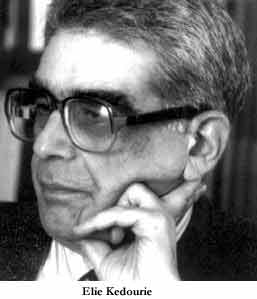
(Elie Kedourie, 1960/93) Nationalism
Chapter 2 SELF-DETERMINATION
- Before Immanuel Kant (1724-1804) our knowledge was based on sensations and the memory of sensations. As a result you could argue that people were the prisoners of their sensations. Therefore, liberty and other virtues were difficult to prove.
- Kant showed a way out of this predicament. He argued that morality and knowledge are separate things. The first is the outcome of obedience to a universal law which is to be found within ourselves, not in the world of appearances that is at the base of the second. Man is free if he obeys the laws of morality which he finds within himself and not in the external world. Only when the will of man is moved by such an inward law can it be really free, and only then can there be talk of good and evil, of morality and justice.
- This inward law is denoted by Kant as the categorical imperative. This was a new and revolutionary formula because it was totally independent of nature and of external command. For Kant the natural world could not be the source of moral value, neither the will of God. Good will = free will = autonomous will.
- Kant’s doctrine makes the individual the very centre, the sovereign of the universe. This however has consequences for the believe in the existence of God. Due to Kant’s theory God is reduced to an assumption which man makes in asserting his moral freedom. Man is no longer the creature of God, but the creation occurs the other way around.[14]
- The logic of his doctrine was carried further for example by the theologian Friedrich Schleiermacher (1768-1834) for whom religion was only the spontaneous expression of the free will. Everything must contribute to the self-determining activity of the autonomous individual. Religion functioned as the perpetual quest for perfection, a perfect way of self-cultivation.
- Kant’s doctrine influenced not only theology it also had consequences for politics. Autonomy becomes the essential end of politics. A good man is an autonomous man, and for him to realize his autonomy, he must be free. Self-determination thus becomes the supreme political good. In other words, the idea of self-determination could from now on be seen as the highest moral and political good. Kant did attempt to discuss politics in terms of his ethical doctrine, for example in his treatise on Perpetual Peace (1794).[15]
- Kant’s ethical teachings expressed and propagated a new attitude to political and social questions. Several habits and attitudes were encouraged and fostered by the doctrine. They helped to make self-determination a dynamic doctrine.
- According to Kedourie, Nationalism found the great source of its vitality in the doctrine of self-determination. Both the French Revolution and this Revolution of Ideas constituted nationalism.
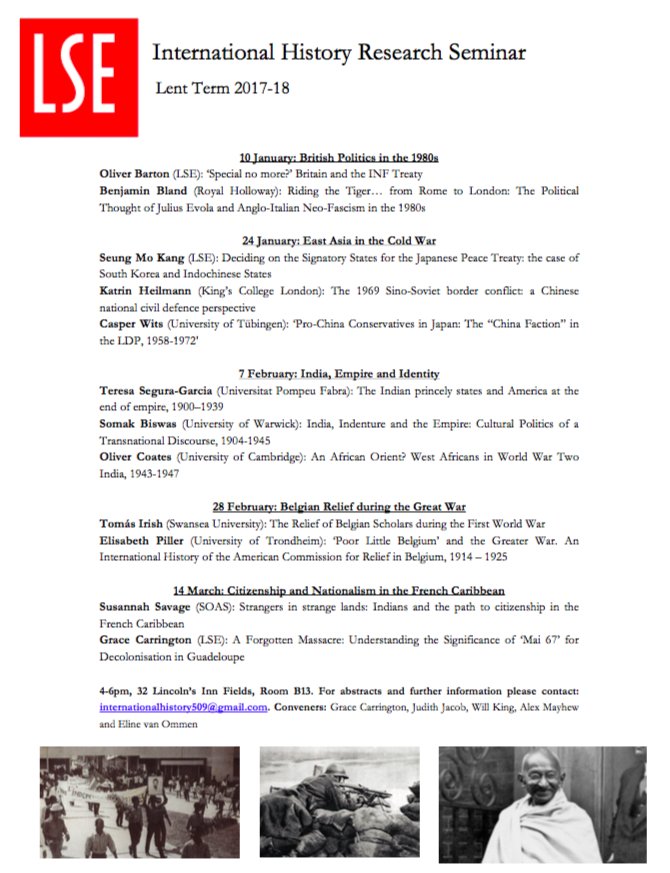
James (Mayhall, 1999) “Nationalism & International Society”
+The Domestication of National Self-Determination
-new sense of international legitimacy post 1918: equating popular sovereignty with end of Europe’s dynastic empires (later anti-colonialism)
-groups who political self-determination heightened after 1918, view taming of national self-determination as betrayal
-thus, these “new” self-proclaimed national groups challenge the state
-this indeterminacy is because boundaries of collective are not given by nature
-though existentially this is may not true (J.S. Mil) – nation as a group whose identity is forged by particular interpretation of its own history
-when it is acknowledged that there is no external objective criteria to distinguish between legitimate and illegitimate collectives, turn to an open test of public opinion to solicit the wishes of individuals in respect to their collective identity (this was strategy of Versailles Conference)
+Weakness of establishing self-determination by plebiscite
- Assumes collective identity already exists
- Discounts agenda (whoever controls the questions of the plebiscite usually can manipulate the outcome.
+At first, these weaknesses not acknowledged by liberals after WWI; but soon became obvious when redrawing the map of Europe, in respects to three situations:
- Problem of minorities: scrambled throughout Europe (virtually impossible to assign a territory that wouldn’t exclude at least some nationals)
- Question of territory: previously this was decided by conquest, which now was seen as politically incorrect, but then how do we determine which states are legitimate?
- State integrity v. security : winning powers willing to use plebiscite to determine new states, but did not want to apply it to their own territories (e.g. British not willing to settle Irish question by plebiscite)
-Kashmir dispute is a contemporary example:
-formula of partition allowed rulers to choose India or Pakistan, Hindu rulers at the time chose India, despite overwhelming majority of Muslims
-after uprising which led to a de facto partition of the state, India willing to conduct plebiscite – thus presuming that Pakistan was not in position to determine outcome – yet since it was clear vote would not favor Indians, it was never actually honored.
-this example shows when using a plebiscite it is impossible to prevent intrusion of political and strategic interests of the major powers.
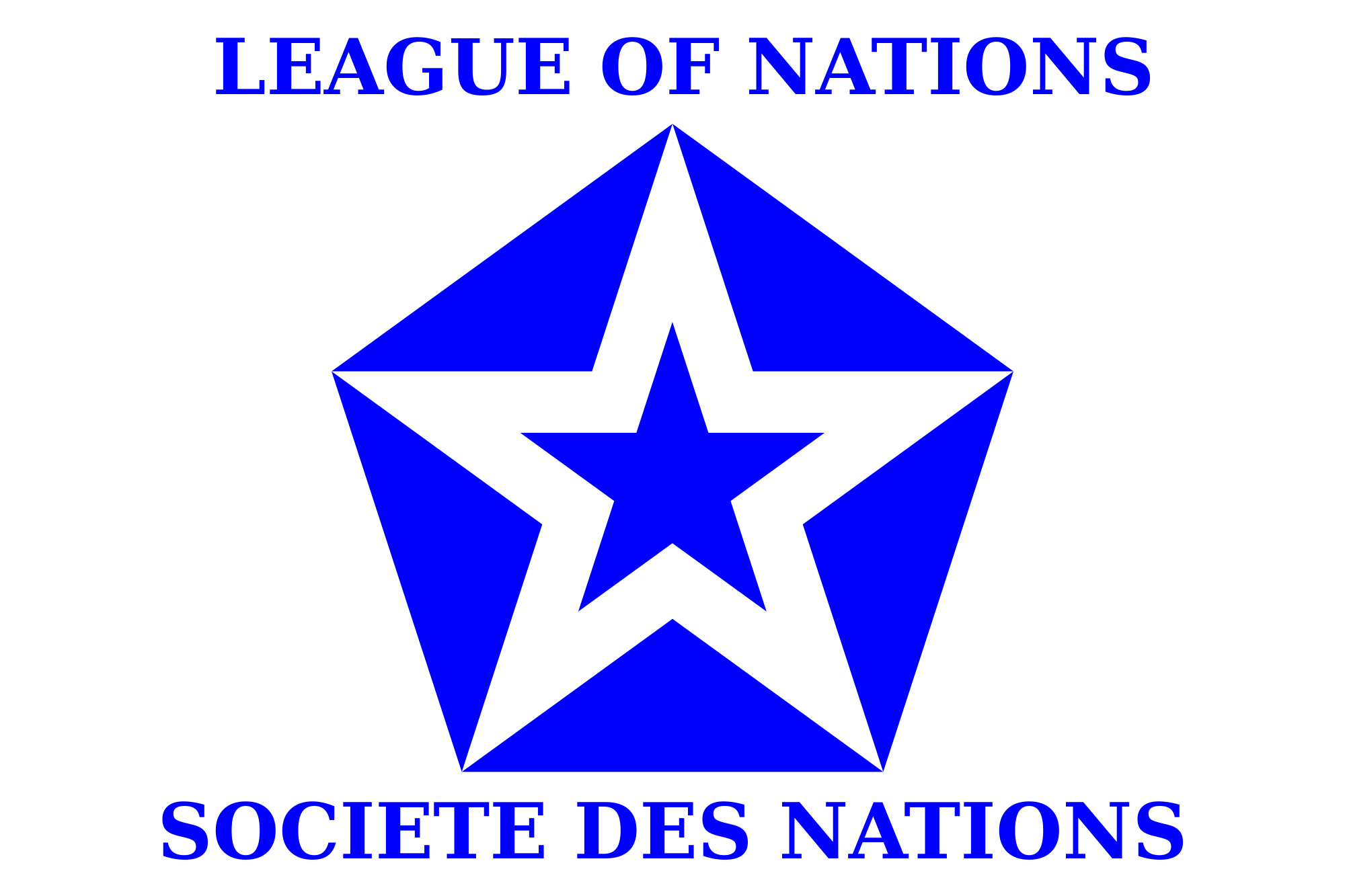
+From the League to the United Nations
-trouble with redrawing European map based on language of self-determination was that it created political problem of minorities and substituted national determination for the idea of an act of self-determination (Wilson aware of potential for tyranny)
-protection of national minorities under League proved ineffective
-thus UN charter anxious to play down cultural nationalism to obtain cooperation between states that was already collectively guaranteed.
+The Conventional Interpretation
-even after 1945, whenever nation came into conflict with state; it was the people who had to move (e.g. 10 million Germans uprooted after WWII, mass population transfers following Indian partition)
-refugee became typical in 20th century
-concept applied to removal of European powers from overseas territories
-post-colonial tests of public opinion to settle disputes over self-determination ruled out by regional organizations established in newly independent African and Asian states
-revision of artificial boundaries created by Europeans no longer central to many African political agendas following independence
-national self-determination is ironic: conquered world by legitimizing state; yet also attempts to freeze political map by bringing an end to territorial division of the world.
-national movements are mostly unsuccessful in overthrowing conventional interpretation of self determination
-what challenge doe nationalism pose for contemporary international order, and under what circumstances is it likely to be successful?
+Two Challenges:
-conventional interpretation (anti-colonial) of national self-determination is clearly a compromise
-thus remains vulnerable to those who feel underrepresented
-main challenges are irredentism and main rationalist challenge with secession
-irredentism: any territorial claim made by one sovereign national state to land with another
-supported by historical/ethnic claims (e.g. Argentina claim to Falkland Islands, Moroccan claim to Mauritania, Spanish to Gibraltar)
-claims to land is combined with appeals to popular sentiment
-claims by national core to peripheral lands, used by government as a means of mobilization and to secure popular support
–secession: successful secession is very rare, but term also applies to unsuccessful separatist rebellions against the state
-any attempt by a national minority to exercise its right to self-determination by breaking away to join another state or establish independent state of its own
-secession depends on group sentiment and loyalty; form of mass politics organized from below rather than above
-seems likely that irredentist claims (except where supported by powerful secessionist sentiment) will be defeated when submitted for legal arbitration.. thus many not constitute a permanent threat to international order
-secession is a more standing challenge (based on ‘rationalist’ world in which self-determination is seen as a basic human right)
+The Preconditions for national success:
-territorial revision is rare, thus so are the circumstances that are conducive to it
-8,000 identifiable separate cultures, yet only 159 independent states.
-the three great waves of state creation associated with collapse of empires
-but no more empires to collapse (at least formal..)
+Three circumstances where secession has potential
- Regional patronage : if two superpowers reluctant to support secession and a stalemate occurs – opportunity for region power (with its own interest) to assist the national movement. (e.g. creation of Bangladesh – Americans supported Pakistan, Soviets – Indian; India ultimately able to intervene and support secession)
- Superpower competition: ideological rivalry between US and Soviets led them to encourage ethnic separatism in order to weaken the other side or gain a tactical advantage; also used to obtain leverage in global diplomacy (e.g. American support of Kurdish rebellion in Iraq not motivated by American desire for an independent Kurdistan, but to weaken Iraq internally for their Iranian allies)
- Constitutional Separatism: possibility of secessionist demands being peacefully accommodated for ; only examples are Norway secession from Sweden in 1905 and Irish Free State from UK in 1921 – neither power willing to preserve unity by forcefully suppressing the demands for separation and did not want a civil war; also structural restraints – in each historical sense of identity predating nationalist era and generally accepted, contending parties led by liberal nationalists shared belief in parliamentary system.
-since 1960s, western countries seen ethnic revival (Basque movement, IRA, Quebec)
-though separation will continue to be resisted, Mayhall contends that if the demands persists it might become easier to accommodate in industrial societies.
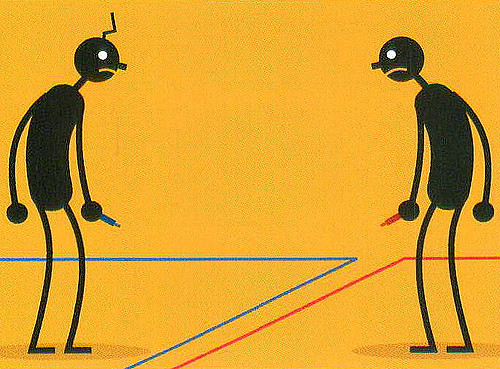
8) Why did territorial rather than ethnic nationalism triumph after 1945: collapse of the USSR?
(Hutchinson, Revision2)
- You can’t say that territorial won. You have both in the USSR. Ethnic nationalism in the USSR was obvious. Was territory the core focus or was it the nature of the people so that you have to redraw the territory of the people: African boundaries?
- When USSR broke up there was long existing territorial boundaries: these territorial republics were ethnically mixed. The argument was that the driver of anti-USSR sentiment was ethnic: it was ethnic antagonism was the explosive. You look at the caucuses: Azerbaijan, Armenian, and Georgia.
- The definition of triumph: you could argue about yes it emerges as a territorial block: you would have to know about the USSR or cases: you don’t need to know all of them: just know two or 3 specific cases>>>\
- Why is the question being posed in these terms: after Empire what emerges in the world. You get a proliferation of nation state formation. The proliferation of nation-state after 1945: so when the Q asks why: what factors does one look to: the role of empire: it leaves open the idea of whether these collapses have occurred because of internal pressures. Metropolitan state -> you can argue that you have to look at the reasons for the way the empire produced movements of resistance. Its possible that the empire collapsed from military exhaustion, military defeat and there was no nationalist movements around.
- YOU Might want to think about the TIME: which era will YOUR ANSWER FOCUS ON PRIMARILY?
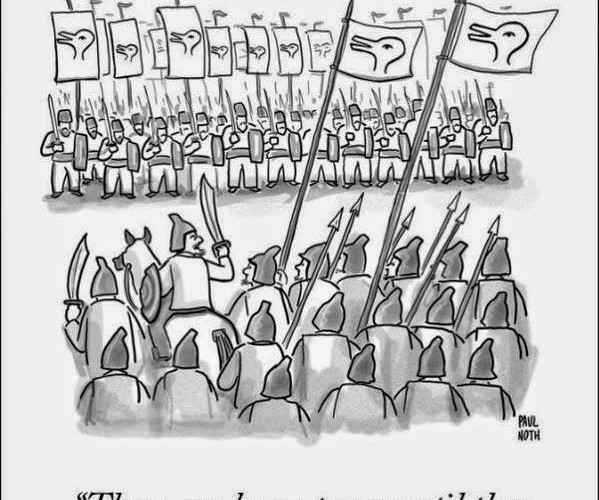
CONCLUSIONS:
(A) (B) (C)
(A)
- Gellner’s incisive Wrong Address Theory was not predicting the collapse of communism.
- nationalism wasn’t exactly suppressed under Communism (taking from Katherine Verdery). It was always there. In fact, communism nurtured national consciousness, it exacerbated ethnic tensions, and it laid the seeds for strongly nationalist citizens to emerge in many places.
- Communism attempted to blanket over nationalisms (Sleeping Beauty/Prison House.Freezer effect of communism) but pragmatic communist political leadership requires mobilization via the peoples ethnicity THERE Was something there before communism arrived: nationalism was present and reorganized.
- The post-Communist states were territorially designed by the Soviet Union therefore the SU did have a significant influence on nationalism. BUT Tishkov overemphasizes the top down explanatory model of agents of control.
- No Russian communist party, no Soviet passport. NOT all republics wanted sucession. Baltics different. Collapse somewhat of an accident. But the cause was not nationalism.
- COMMUNISM is a powerful centralizing political doctrine that competed viably against nationalism but could not overcome the simple appeal of the doctrine of nationalism.
- Fear of demographic Russian decline
- Counter-factually, nationalist territories would have emerged regardless of communism in the Czarist Russia along bourgeois nationalist lines.
WHY was Yugoslavian ethnic violence so high after communism’s failure? Because these were longstanding grievances where as the grievances of the Russian empire were centred against a highly dominant Russian ethnie. - Linguistic unification as a primary but not necessary contingency still
(B)
- Nationalism was given force by the way in which communism disintegrated. See Tishkov: elites within the Republics: before they had had power, but not privilege. By declaring themselves nationalist and playing the popular politics game, they could now have both.
- Nationalism NOT the cause of the break-up of Communism, but a secondary. Symptomatic. Gorbachev’s reforms, his acquiescence, the economic situation, and the spillover effects of other revolutions all more important.
- More nationalism a consequence of break-up, inc exclusive kind. Discrimination – eg against gypsies – as leaders and peoples seek to take advantage of new order.
- Verdery argues that the nation was a default setting after communism. I agree with this point.
- Federal states do reiefy nationalist groups: they are subcontainers in the state that serve dual contradictory purposes: protect/empower cultural groups + manage cultural group (superficial forms of nationalism). The dominant ethnie attempts to Russify the populations.
- The post-Communist states were territorially designed by the Soviet Union therefore the SU did have a significant influence on nationalism. BUT Tishkov overemphasizes the top down explanatory model of agents of control.
- Russians felt they were shouldering the burden of the EMPIRE>
- (F) CAUSALITY: USSR forgets the war, economic collapsed,
(C)
EU entrance: needed to pretend to be civic nationalism: USSR Russian dominance is very obvious.
Yugoslavia has a lack of resources -> too small to survive.
- Counter-factual of the USSR: why did it breakdown into nation-states? Why not into a multicultural/national power.
- Your Thesis: primordial nationalism is only important when USSR prospects of collapse are high: the resources are utilized to reorganize political power when the USSR’s centre collapses.
- International self-determination recognition used primordialist approach so as to avoid precedent setting for any political movement.
- IT IS THE STRUCTURE at the CENTRE reduced the will to hold power in the regions.
- Answer MUST be conscious of TIMING: (PRE) = pre-collapse (POST) = post-collapse
- Whether there was a nation narrative before or during the USSR, it only matters after! SO what? (A) doesn’t matter until the collapse is eminent.
- Nationalism was an outcome of the republican system of government: Breuilly.
The more things change the more they stay the same: POWER POLITICS
Russian Empire > Bolshevik Revolution >
[1] (Martin, 2001), Terry. The Affirmative Action Empire: Nations and Nationalism in the Soviet Union, 1923- 1939. London: Cornell University Press, 2001, pp 2.
[2] Suny, Ronald Grigor. The Revenge of the Past: Nationalism, Revolution, and the Collapse of the Soviet Union. (Standford, Stnaford University Press, 1993), pp. 259.
[3] The Affirmative Action Empire: Nations and Nationalism in the Soviet Union, 1923 -1939, by Terry (Martin, 2001).
[4] Gellner, Ernest. Nations and Nationalism. Oxford: Blackwell, 1983, pp. 129.
[5] Although Gellner may not have believe in the inevitability of the collapse of the Soviet Union, his description of the relationship between communism and nationalism seems to have gained further confirmation from that collapse.
[6] Tishkov, p. 294
[7] Tishkov, pp. 31.
[8] Smith, Jeremy. Review work(s): Ethnicity, Nationalism and Conflict in and after the Soviet Union: The Mind Aflame by Valery Tishkov. Europe-Asia Studies, Vol. 49, No. 8 (Dec., 1997), pp. 1544.
[9] Tishkov, Valery. Ethnicity, Nationalism and Conflict in and after the Soviet Union: the Mind Aflame. London: SAGE, 1997, Chapter 2, pp. 30.
[10] Ibid, pp. 30.
[11] Ibid, pp. 30.
[12] Motyl Alexander J. Sovietology, rationality, nationality: coming to groups with nationalism in the USSR (New York, Columbia University Press, 1990), pp. 47.
[13] Tishkov, pp. 30.
[14] If the categorical imperative imposes on us the duty to promote the highest good, then it is necessary to assume the existence of God, a perfect being, since an imperfect being could not be the source of the highest good. Therefore it is morally necessary to assume the existence of God. Kedourie, Nationalism, p. 17.
[15] In this work he sets out the conditions for a stable, peaceful international order. The civil constitution of every state should be republican, because for Kant a republican state was one were the laws could be the expression of the autonomous will of the citizens. Only in such a situation could peace be guaranteed.

